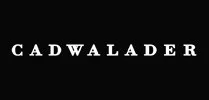

Cadwalader, established in 1792, serves a diverse client base, including many of the world's leading financial institutions, funds and corporations. With offices in the United States and Europe, Cadwalader offers legal representation in antitrust, banking, corporate finance, corporate governance, executive compensation, financial restructuring, intellectual property, litigation, mergers and acquisitions, private equity, private wealth, real estate, regulation, securitization, structured finance, tax and white collar defense.
One of the key ancillary documents in commercial real estate loans is the environmental indemnity. United States Environment

One of the key ancillary documents in commercial real estate loans is the environmental indemnity. Under federal and state environmental laws, an owner of real property is strictly liable for the remediation of contamination from hazardous substances on such real property.
Environmental indemnities are typically executed by the borrower and the guarantor collectively as the indemnitor and include representations and covenants relating to hazardous substances and, most importantly, from a lender's perspective, an indemnification in favor of the lender for any claims or losses arising from hazardous substances on the mortgaged property. Unless otherwise negotiated by the indemnitor, the indemnity survives indefinitely. Consequently, much of the negotiation between the borrower and the lender centers around trying to limit when the lender can make a claim under the indemnity.
The following are three major avenues available to indemnitors to limit their liability under environmental indemnities.
Release Provisions. Given that the standard form of environmental indemnity survives indefinitely, in the event of a foreclosure, the indemnitor would still be liable to the lender for environmental liabilities arising after such foreclosure when the borrower no longer owns and controls the property. It is understandable that the indemnitor would not want to be liable for the actions of a third party after it no longer owns the property. Therefore, the lender will often agree to add a release provision specifying that the indemnitor is not liable for any losses suffered by the lender to the extent such losses arose solely from acts, conditions or events after the date the lender acquired title to the property through a foreclosure or deed in lieu of foreclosure. However, these provisions should not release the indemnitor from any ongoing contamination or ongoing events at the time of foreclosure. Additionally, if there is a mezzanine loan that is secured by a pledge of the equity interests in the mortgage borrower, then it is customary to include a release in the environmental indemnity for the mortgage loan upon the foreclosure by the mezzanine lender of the equity interests of the mortgage borrower. In this instance, only the guarantor should be released since it will no longer have an interest in or control the borrower after a foreclosure. The mortgage borrower, however, should not be released as the mortgage loan will remain outstanding, and the mezzanine lender will then control the mortgage borrower.
Sunset Provisions. One of the most common ways for an indemnitor to cut off its liability under an environmental indemnity is through the addition of a sunset provision, which provides that after the repayment in full of the loan, the environmental indemnity will terminate after a certain period of time and upon the satisfaction of certain conditions. While borrowers often ask for a one-year sunset, lenders will generally insist on having the environmental indemnity survive for two, if not three, years after repayment in full of the loan. With respect to the conditions the indemnitor must satisfy in order to receive the sunset, the most important condition is that the borrower must deliver a clean environmental report, in form and substance reasonably acceptable to the lender, at the time the loan is repaid in full (or closer to the date of the sunset) so that the lender is comfortable that there is not any current environmental risk.
Environmental Insurance. Another way indemnitors can limit their exposure under environmental indemnities is to ask the lender to rely on environmental insurance policies first before making a claim under the environmental indemnity. While this is not as common as the release or sunset provisions, more and more indemnitors are starting to make this request. If a lender is willing to agree to this, there are certain protections to consider for inclusion in the environmental indemnity. Of course, the policy must be approved by the lender, the policy must be in full force and effect at the time a claim is made under the policy, and the amount of the losses must be in excess of the amount of the deductible under the policy. Most importantly, the lender cannot hold off on making a claim under the environmental indemnity indefinitely. If a claim under a policy is not paid and the lender has not received reimbursement for its losses within a certain number of days, the lender needs to be able to make a claim against the indemnitor. The lender should not be required to pursue an insurance company for an extended period or commence litigation as a pre-condition to pursuing the indemnitor. Indemnitors will try to extend this forbearance period as long as possible, but lenders generally try to limit the forbearance period to three months.
At the end of the day, the environmental indemnity is an important document for the lender so it can protect itself against environmental risks, but there is some room for the lender and the indemnitor to negotiate.
The content of this article is intended to provide a general guide to the subject matter. Specialist advice should be sought about your specific circumstances.